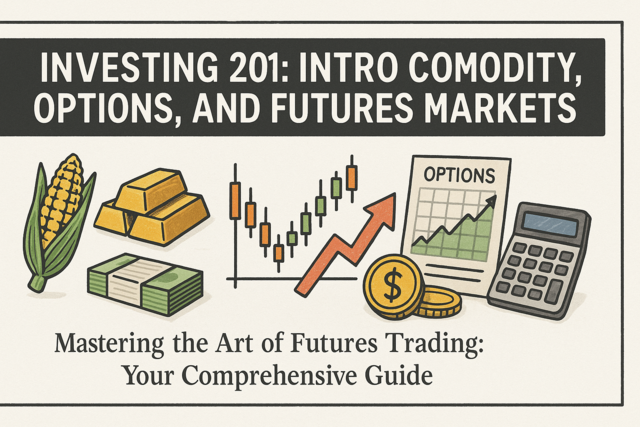?
To gain a better sense of how Adjustable Rate Mortgages (ARMs) work and source(s) upon which their accompanying interest rates are based, it will be helpful to understand ARM indexes, the different types* that exist, and the manner in which they operate.
Metrics used to track the markets indexes help to establish costs to borrow money over an extended period of time.
Note: Because of the variability of ARM indexes, we'll review only indexes pertaining to Adjustable Rate Mortgages as opposed to blanketing all types of mortgages.
To establish the interest rate that a borrower needs to pay, all ARMs rely upon an index. However, because there are a number of indexes the concept of an interest rate tied to an index proves to be somewhat confusing.
B. ARM Indexes: Varieties
The following indexes are used by lenders to set the interest rates on adjustable rate mortgages:
Prime Rate. This is the most desirable interest rate charged by banks to their most favorable clients. Commonly used for calculating home equity lines of credit, the prime rate represents the lowest available interest rate. For the most part, the prime rate tends to rise at a more rapid rate than it declines.
Certificate of Deposit Index (CODI). The basis of the CODI index is made up of interest rates paid on 3-month CD accounts. Although a relatively stable index, the CODI reacts to market conditions at a more rapid rate than either the COFI or COSI indexes. Common maturities of these indexes are one month, three months, six months, and one year.* The CODI Index is calculated by taking the 12 most recently published monthly yields added together, dividing the result by 12 and rounding this result to the nearest 10,000th of one percentage point.
*Constant Maturity Treasury (CMT or Treasury Yield Curve Rates). This Constant Maturity Treasury is the weekly or monthly averages of United States Treasury securities, volatile indexes that respond quicker than the COFI or MTA indexes but slower than CD indexes. CMT's reflect the state of the economy while swiftly adapting to economic changes. Though their reaction time is slower than the CD index, it is considered faster than the COFI and MTA indexes.
Cost of Savings Index (COSI). The function of the COSI index is the effect that interest rates are presently having upon World Savings (Golden West Financial Corporation) deposit accounts. The weighted average of the interest rates on deposit accounts, the COSI index is largely considered to be one of the more stable indexes.
*London InterBank Offered Rates (LIBOR). A global index which follows the world economic condition, the LIBOR enables international investors to match their cost of lending to their cost of funds. Essentially, the LIBOR is the rate of interest London banks charge one another for borrowing purposes, on Eurodollar transactions. In terms of volume and credibility, London is the center of the Euromarket. The range of LIBOR rates used for ARM indexes includes the one month, three month, six month, and one year structure.
The six month structure is the most popular LIBOR used in conjunction with ARM indexes. In terms of U.S. indexes, the LIBOR most closely matches that of the 1-Year CMT and is more susceptible to quick and wide fluctuations than the COFI index.
Treasury Bill (T-Bill). Contingent upon the interest rates derived from auctions on U.S. Treasury bills of one, three, or six month maturities, T-Bill indexes work in accordance with the market, and as such, respond quickly to fluctuations.
Note: The six month structure is the most popular T-Bill used in conjunction with ARMs. Treasury bills issued by the U.S. government in maturities of 1, 3, and 6 months (4-week, 13-week, 26-week bills or 28-day, 91-day, 182-day bills) help pay for the national debt and other expenses.
Upon reaching what is known as a state of constant maturity, the U.S Treasury Department amasses yields on Treasury securities from the daily yield curve (derived from the closing market bid yields on actively traded Treasury securities in the Over-the-Counter (OTC) market and applies them to paying off the national debt and additional domestic expenses.
*Indicates the most commonly used ARM indexes (used by more than 75% of all ARMs).
Though of lesser significance, additional indexes include:
- Fannie Mae's Required Net Yield (RNY).
- Federal Cost of Funds Index.
- Freddie Mac's Required Net Yield (RNY National Average Contract Mortgage Rate).
- National Monthly Median Cost of Funds Index.
- Quarterly Average Cost of Funds.
- Semiannual National Average Cost of Funds.
- Semiannual Weighted Average Cost of Funds Index.
C. ARM Indexes: How They Are Used to Establish Interest Rates
After the pre-established term period (for instance, a month, one year, five years), the interest rate on an adjustable rate mortgage will revert from an isolated fix state to its naturally fluctuating state.
Following the initial term, the interest rate will be determined based upon the following criteria:
- The chosen ARM index (COFI, LIBOR, or others).
- The margin (essentially a price markup added to the index).
In order to determine the borrower's interest rate, at the close of each adjustment interval, the banker-broker researches the rate of the chosen index, multiplies it by the mortgage loan balance amount, and then adds on what is known as the preset margin (essentially what is tantamount to a banker-broker's fee).
D. Index Selection: How to Choose?
Although the Federal National Mortgage Association's advice may come across as being quite general it does offer basic insight into the way in which indexes work.
And, whereas indexes are concerned, there are no absolutes; it is probably best to counsel clients in a more general sense. For instance, on account of its stability, many consider the COFI index to be among the best of the ARM indexes.
All of the other indexes tend to fall somewhere in the middle. And when queried, experts will each tend to put forth a different ranking of the remaining indexes. The exception may be that most experts view the 1-month CMT, 6-month CD, 1 and 6 month LIBORs, and the MTA to be more toward the positive side while the 3-year CMT falls more toward the negative side.
Yet, aside from the basic opinions mentioned above, there remains little concrete information when attempting to forecast interest rate trends and choose a favorably productive index, that is, one that moves with the market and fares better despite declining rates, or a lagging index that moves behind the market and, thus, fares better during times of rising rates.
Unfortunately, the majority of financial and economic experts have no easier time predicting the rise and fall of rates. And, the fact that there are no guarantees or even likely scenarios with respect to ARM mortgages, illustrates why they are considered to be higher risk ventures than fixed rate mortgages.[iii]
E. ARM Indexes: Conclusion
Generally speaking, there are a myriad of ARM indexes upon which monthly (or other time period) rates are assessed. Traditionally, the lender will align with a particular index and, from such an association, calculate interest rates charged to borrowers.
It is both the banker-broker's and the borrowers' responsibilities to become familiar with the particular index in question so as to better understand the way in which the associated interest rate charges will work.
And, while unfortunately there is no crystal ball that can look into the future to see the ways in which interest rates will fluctuate, there are basic laws regarding their movements.
"Interest rates on residential mortgages and U.S. Treasury securities can be influenced by monthly changes and the longer term trend changes of economic indicators. There are many variables that can influence the rates on long term debt instruments, but an understanding of key economic indicators can provide clues as to the future direction of interest rates."
The best advice is for both banker-brokers and borrowers to keep up with economic reports specifically with respect to variances in interest rates so that they can plan and act accordingly.






















